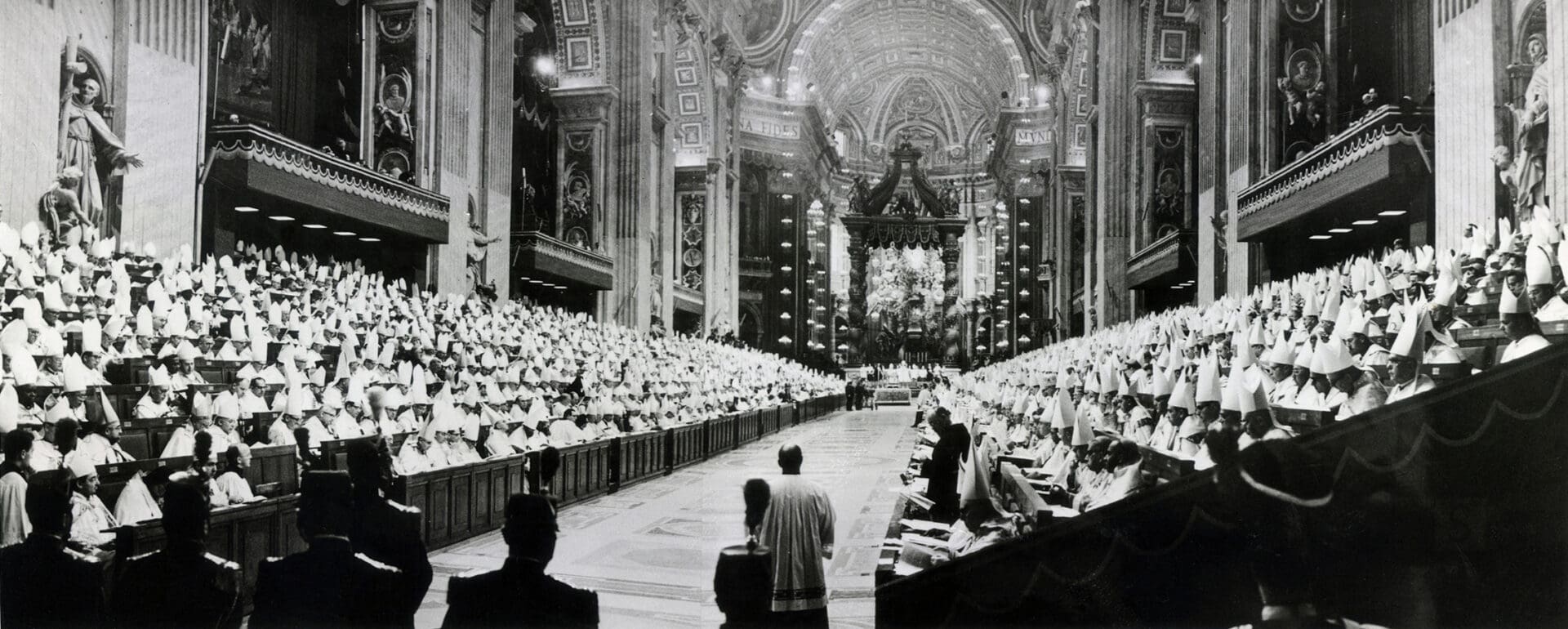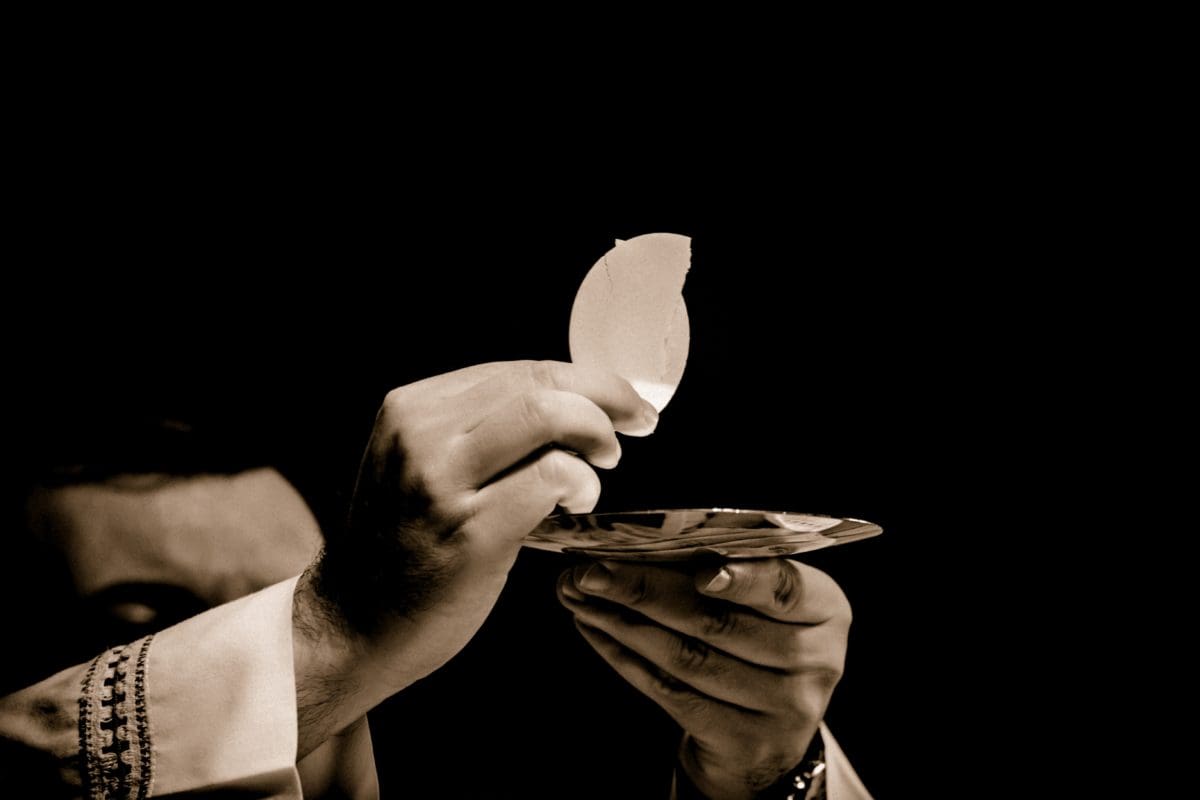The Council’s desired reform of the Missal is irreversible. That, at least, is what the Pope said. “Let all everywhere adopt and observe what has been handed down by the Holy Roman Church, the Mother and Teacher of the other churches, and let Masses not be sung or read according to any other formula than that of this Missal published by Us. This ordinance applies henceforth, now, and forever, throughout all the provinces of the Christian world…: This Missal is to be used by all churches.” Such is what Pope St. Pius V wrote in his Apostolic Constitution, Quo Primum, by which he promulgated the Missal of Trent in 1570.
Still, when Dom Prosper Guaranger, considered by most the founding father of the Liturgical Movement, reopened the Benedictine Priory of Solesmes in 1832, there were nearly as many Missals in use in France as there were dioceses—more than 250 years after Pius V had promulgated Trent’s singular book. One bishop observed that he had five different missals in his own diocese alone. (To our bishops who may be reading: can you imagine the same phenomena today on your confirmation rounds?) Upon Gueranger’s death in 1875, efforts to bring a unified Roman Missal over the mountains into many dioceses of France were well underway.
The tension between Roman centralization and local adaptation is still an issue today, and Pope Francis’s recent motu proprio, Magnum Principium, has struck a major chord between the one and the many—and made it a live-wire of controversy sparking speculation throughout the Church—some perhaps justified, some perhaps not.
There are, of course, many aspects of Church life affected by the motu proprio. First, the liturgical language may take on a new tone. Second, legally speaking, the Code of Canon Law and other procedural legislation (such as that found in Liturgiam Authenticam) are now changed. Third, there are political ramifications (probably better called “ecclesial ramifications”) as Roman involvement in authorizing texts will be decentralized and given over to local bishops’ conferences.
But the one dynamic at the core of the motu proprio most in play and most affected is the relationship between the universal and the particular, the one and the many, unity and diversity. To what degree ought the Church and her liturgy be unified in a common celebration or adapted to particular circumstances? Both poles ought to be in operation, and emphasizing one to the detriment of the other will weaken the liturgical prayer of one and all.
Finding the balance between unity and diversity is no easy task. While it’s possible that one can find a wrong answer to their correct connection—too much unity or too much diversity—there is no one correct answer. Nor like so many ecclesial (or secular) conundrums does the matter break along so-called traditional and progressive lines.
For example, a traditionally-minded Catholic can appreciate the liturgical authority of Rome and the unitive principle it represents when it comes to, say, the value in the Latin Church’s single, longstanding Roman Canon or the unitive power of the Latin language. Yet at the same time he is grateful for the legitimate options of Mass offered either versus populum or ad orientem, or the latitude to receive communion standing or kneeling (see GIRM, 160).
Similarly, the progressive parishioner appreciates the inclusive paraphrase, “for all,” in place of pro multis in the Eucharistic Prayer, versus the varied “for many.” But even while he emphasizes that Jesus died “for all,” he rightly supports the principle of subsidiarity or the legitimate variations found in local rituals, such as the lasso or coins in the new Marriage Rite.
In short, each Catholic—whether drawn in a traditional or progressive direction—desires unity in some aspects of the liturgy and diversity in others; rarely is one wholly supportive of exclusive unity or diversity.
Nor is the Church at large disposed to favor one aspect to the detriment of the other, but, rather, to keep both in harmony. What Pope Francis names as the “Great Principle”—Magnum principium—is that “liturgical prayer be accommodated to the comprehension of the people so that it might be understood.” This “accommodation” entails the translation from a universal Latin text into a multitude of vernacular languages in the world’s local churches. But this Great Principle is, in fact, subordinate to—or, rather, is in instance of—the interplay between even Greater Principles.
Before the Fathers of the Second Vatican Council had even finished offering their first sentence to the faithful at large, they indicated their principal aims, which include: “to adapt more suitably to the needs of our own times those institutions which are subject to change,” and “to foster whatever can promote union among all who believe in Christ” (Sacrosanctum Concilium, 1). Thus, the Church is to strive for and meet the challenge of being able “to adapt” and “to foster union” within the liturgy.
Should the Church pray in one tongue, or many? Ought there be one legislator, or many? In truth, these questions don’t permit simple either/or answers. Magnum Principium continues a shift in emphasis away from Roman unity to local variety. If we can infer from the mind of Mother Church that the “virtue lies in the middle,” finding the Golden Mean is an ongoing task, today as in the time of Pope St. Pius V and Dom Prosper Gueranger. Adaptation, inculturation, or variation, all while maintaining the “substantial unity of the Roman Rite” (Sacrosanctum Concilium, 38) is the question of today and tomorrow. Let us pray that the one Mystical Body, along with its many cells, can meet this goal as the Council’s irreversible reform desired.


